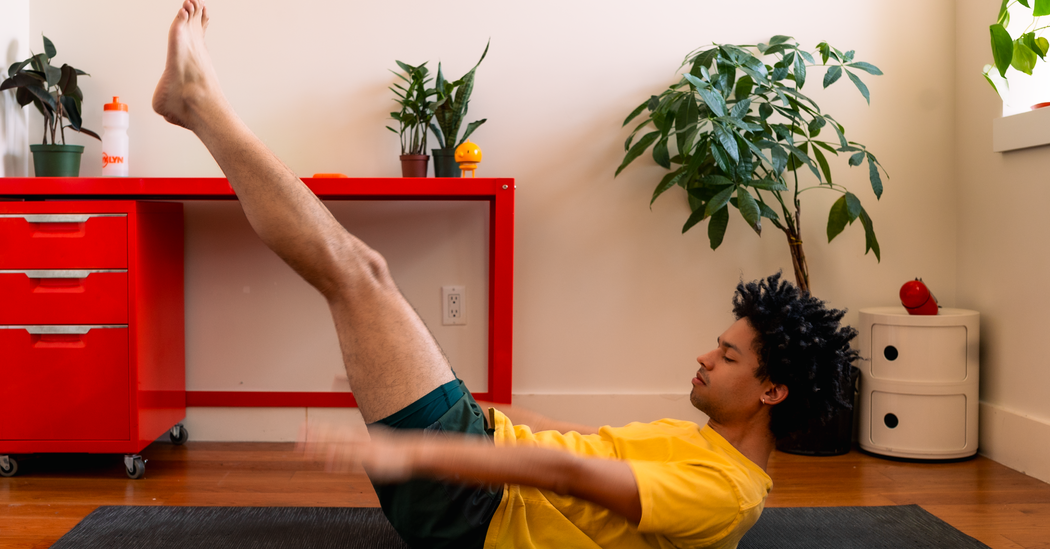Pilates has become extremely popular over the past decade, and for good reason. But attending a studio with professional instructors or purchasing home equipment can be expensive, especially if you’ve never tried working out before. Luckily, you can get many of the same benefits of studio-based Pilates at home, as long as you have a mat and your body.
Invented during World War I under the name “Contrology,” Pilates is a method of exercise that involves slow, controlled, low-impact movements, often using a wheeled platform called a reformer. To do. This exercise relieves lower back pain, builds muscles, and strengthens your core, especially during recovery from pregnancy.
Benjamin Gordon, a professor of applied physiology and kinesiology at the University of Florida, said that while there is some small research that suggests Pilates helps with cardiovascular health, it is not compatible with other workouts such as weightlifting, running or walking. He said it is best to do it in parallel.
However, you don’t have to go to a studio or buy a Pilates machine to try Pilates. Research suggests it’s possible to do it on just a mat and still see benefits such as improved posture, strength, and flexibility, along with lower blood pressure and reduced arthritis pain.
How to start Pilates at home
If you decide to try Pilates for yourself, “pay attention to how your body feels,” says Alison McKenzie, an exercise science instructor at the University of Connecticut and a certified Pilates instructor. . “If you have pain in your neck or pain in your lower back, you probably need to modify your exercise.”
Most experts agree that it’s best to start with an instructor who can guarantee you’re performing the movements correctly and won’t injure yourself, ideally one who’s certified by the Pilates Method Alliance.
“It’s especially important for beginners to understand that movement is all about control, not using momentum,” said Ashley Goodwin, an exercise scientist at the Feinstein Institute for Medical Research.
Here are some moves you can do at home without any equipment. Try each exercise below for 5-10 minutes. Focus on form, not speed. Take breaks if necessary, but ultimately aim to get through without taking a break.
If one round is too easy, try two or three with short breaks between rounds. Or head over to the UK National Health Service and get some of his guided Pilates workouts, including chair Pilates and Pilates for people with arthritis, back pain and knee problems.
one leg circle
McKenzie says this is one safe thing you can do at home. The muscles on either side of your abdomen, called obliques, help you twist from side to side, increasing hip mobility.
Start by lying on your back with your arms at your sides, knees bent and feet on the floor. As you exhale, lift one knee toward you so that your shin is parallel to the floor. Keeping your knees bent, start slowly making small circles. Once your hip bones begin to move, make the circles smaller. Continue for 1 minute on each side.
Make it more challenging by making the circle a little bigger or by straightening your raised leg toward the ceiling. Over time, you can also straighten your other leg so that it is flat on the floor.
pilates 100
One of the most classic Pilates moves, Pilates 100 strengthens the deep abdominal muscles as well as your arms and legs. If you have back or neck pain, try this at home.
Start by lying on your back with your arms at your sides, knees bent and feet on the floor. As you exhale, lift one leg with either your knees bent or straightened. Next, start moving your arms up and down a few inches. Breathe in for 5 pulses and exhale for 5 pulses. Switch legs. On each leg he repeats 5 times until the pulse reaches 100.
If you feel unable to do so, keep both feet on the floor. Or make it more challenging by lifting your legs together and holding that position for all 100 arm pulses. Alternatively, lift your head and shoulders off the mat and straighten your legs.
swimming practice
This movement helps strengthen your shoulders and glutes while stabilizing your core and lower back.
Start on your hands and knees. Place your hands under your shoulders and knees under your hips, keeping your back flat and core engaged. As you exhale, extend one arm forward parallel to the floor to stabilize your core. Inhale and bring your hands back under your shoulders. Then, as you exhale, extend one leg back parallel to the floor, and as you inhale, lower your knee back to the ground. Try 3 sets of 10 reps on each side.
Make it more challenging by lifting your arm and opposite leg at the same time.
cat stretching
This stretch is often used in both Pilates and yoga and helps reduce stiffness in the spine.
Get on all fours with your hands under your shoulders and your knees under your hips. Slowly tuck your chin toward your chest and inhale as you round your upper back toward the ceiling. Tuck your chin and exhale as you look forward and lower your spine comfortably toward the floor. Repeat 20 times.
Emma Jasinski is a freelance science journalist whose work has appeared in National Geographic and Underark, among others.

